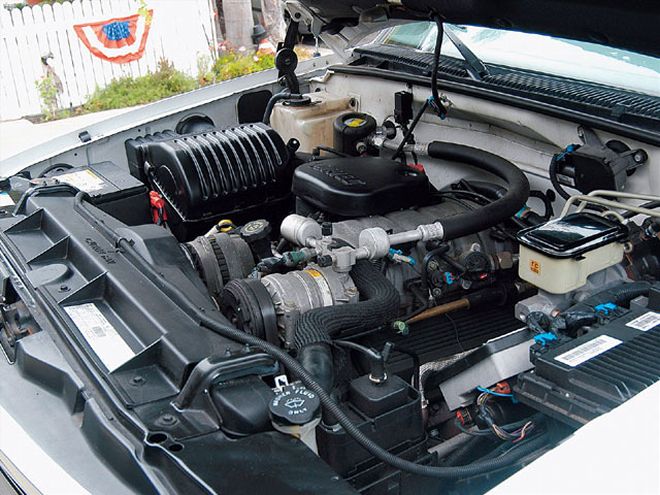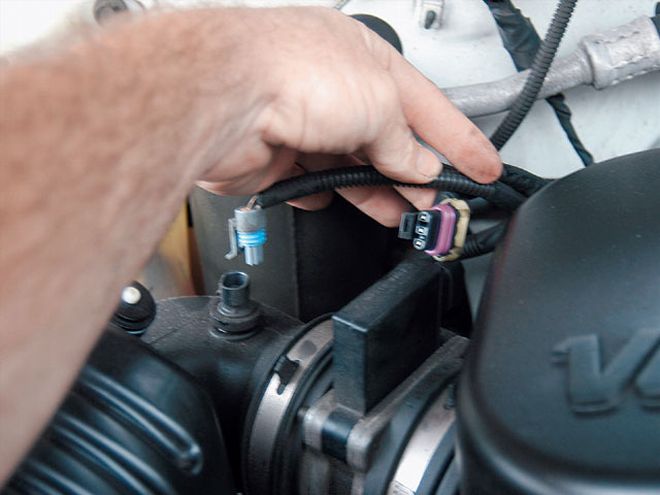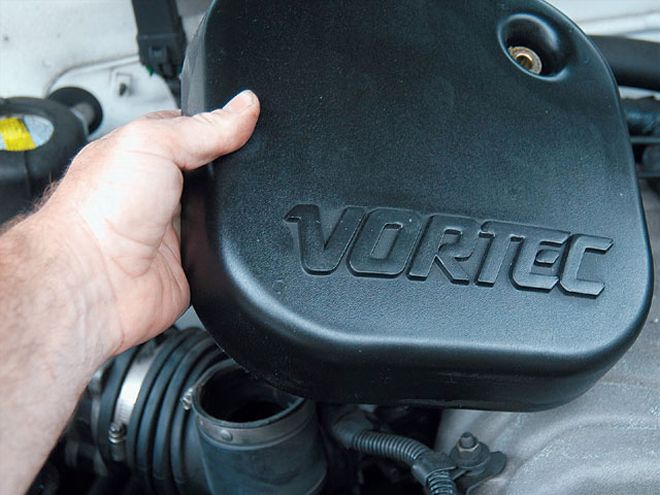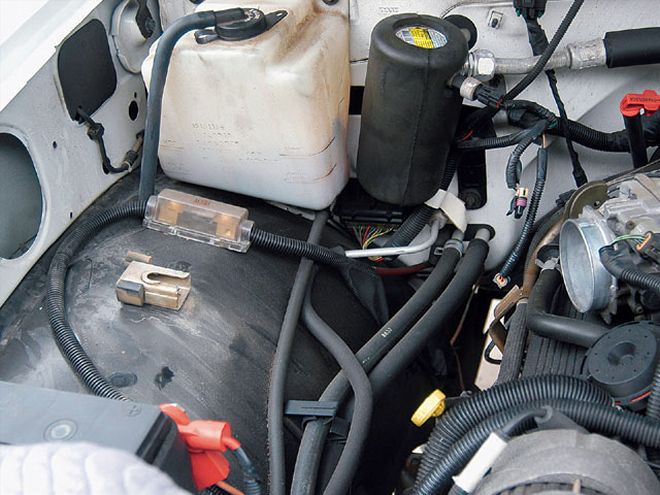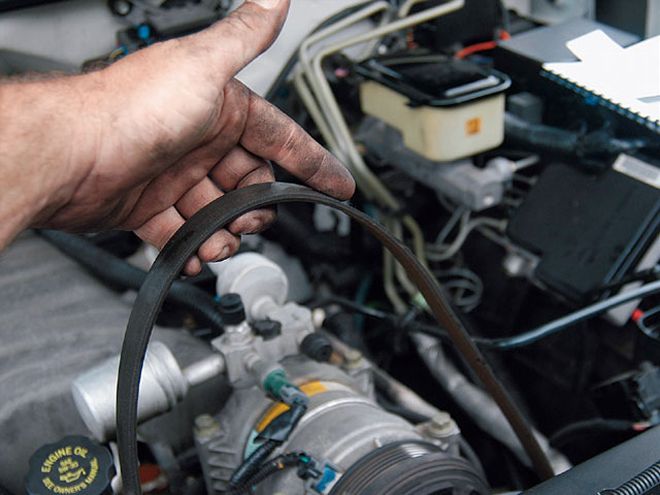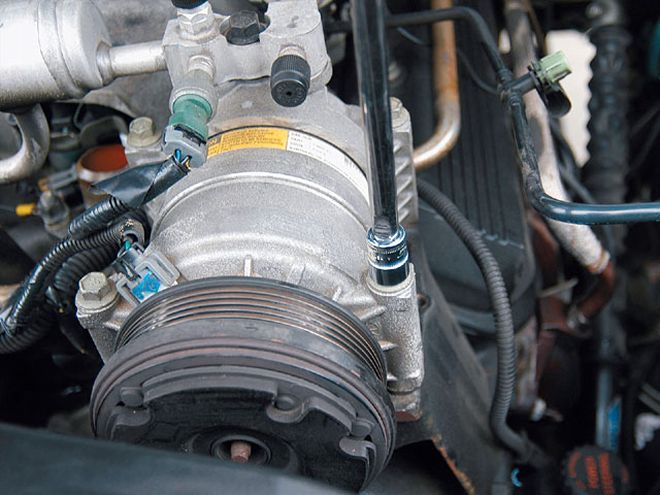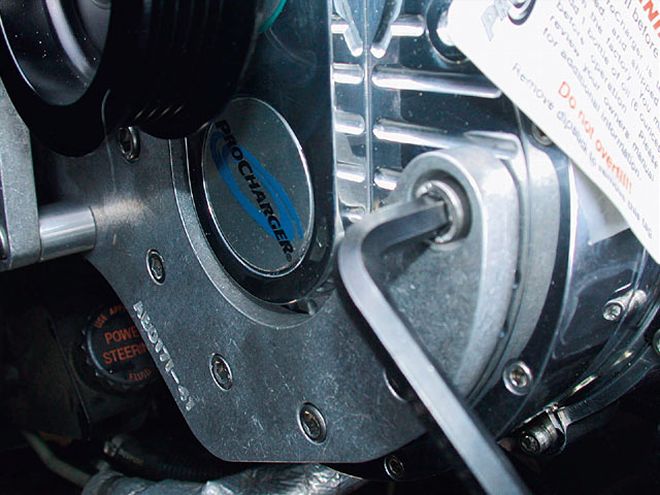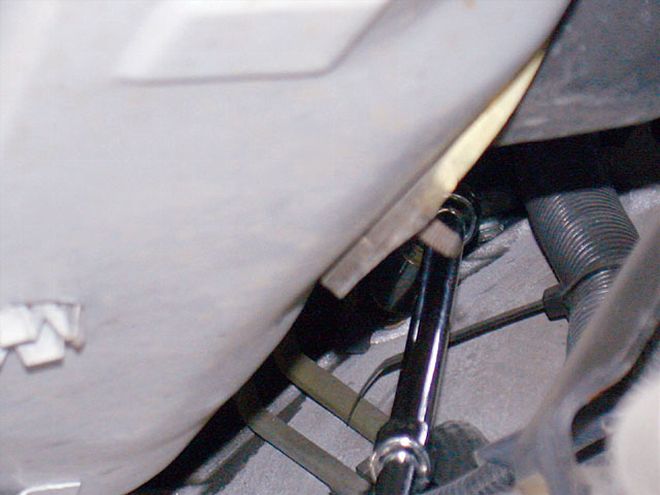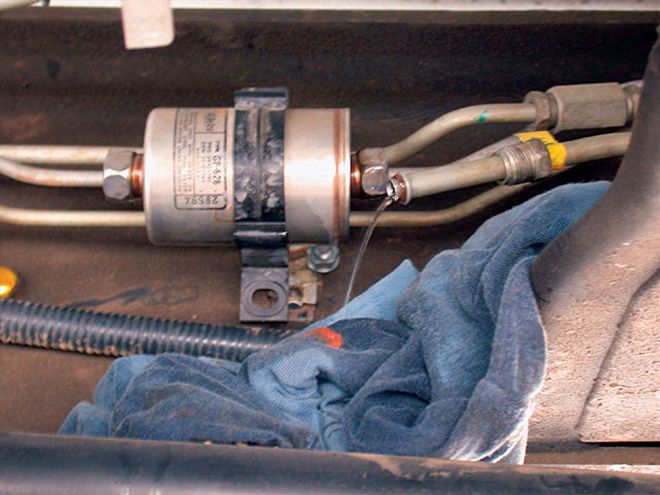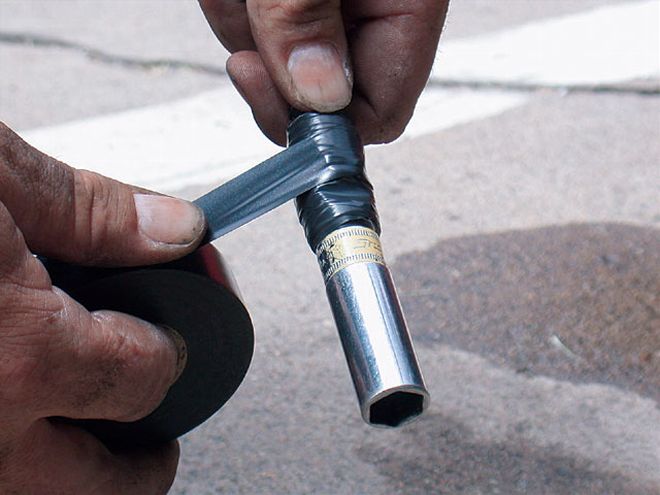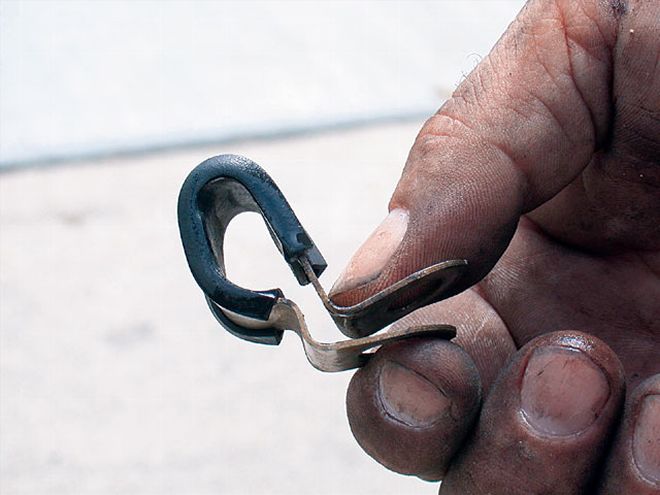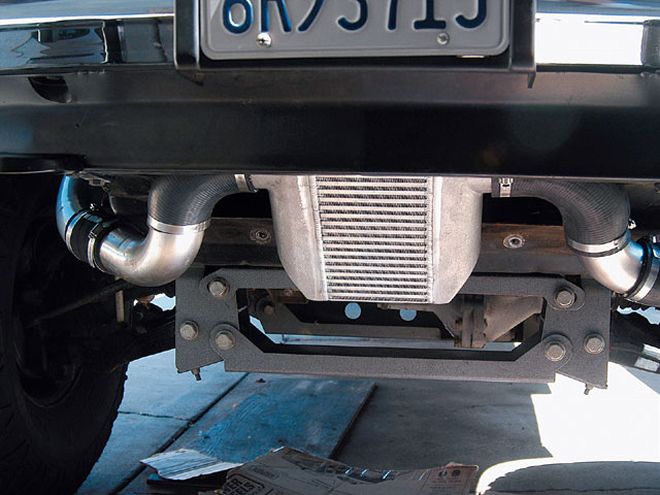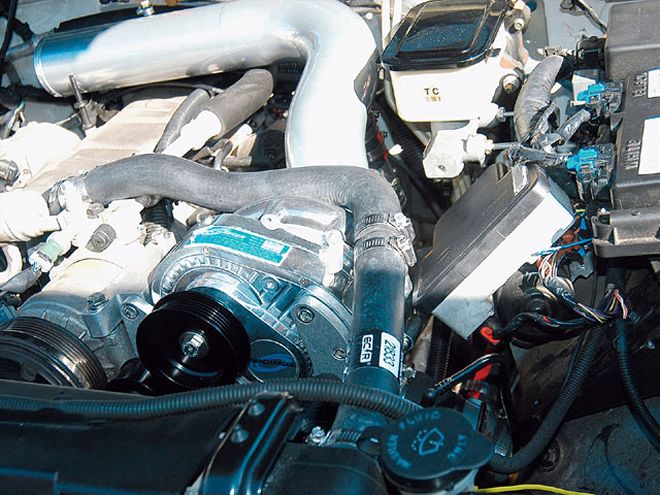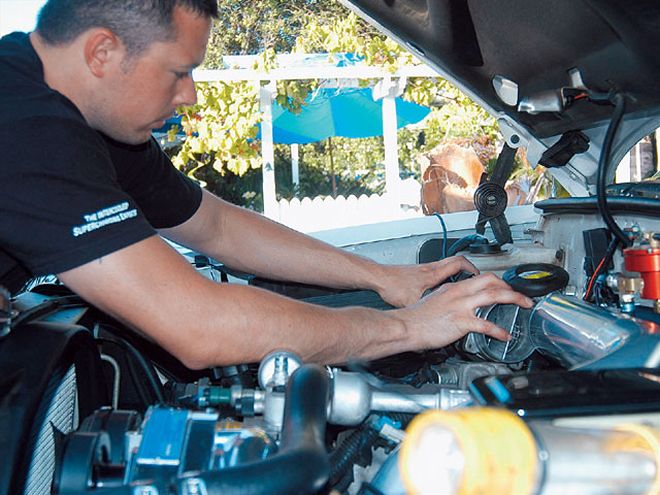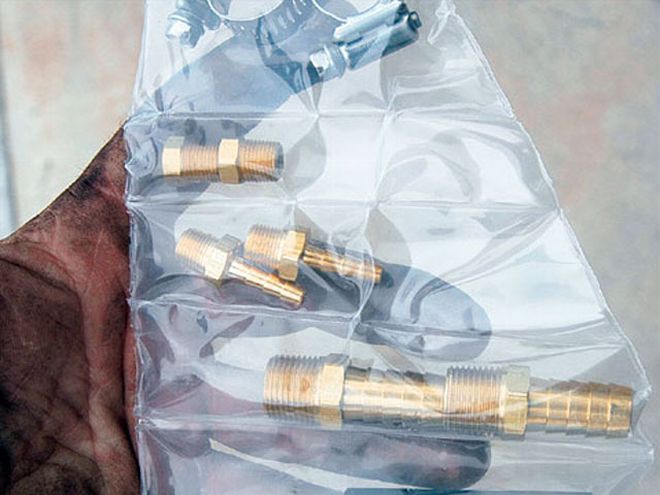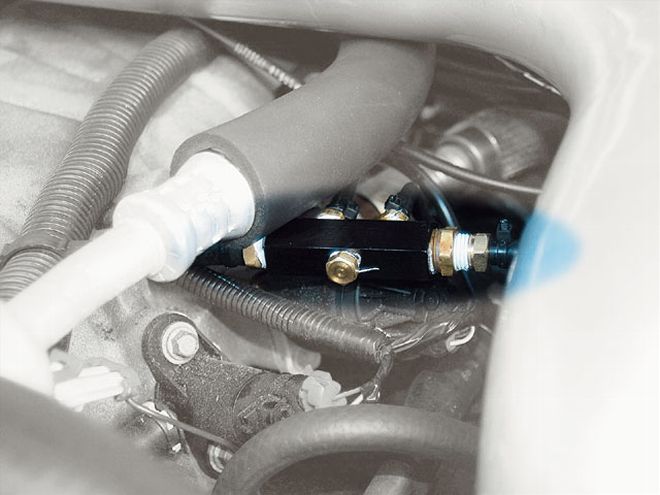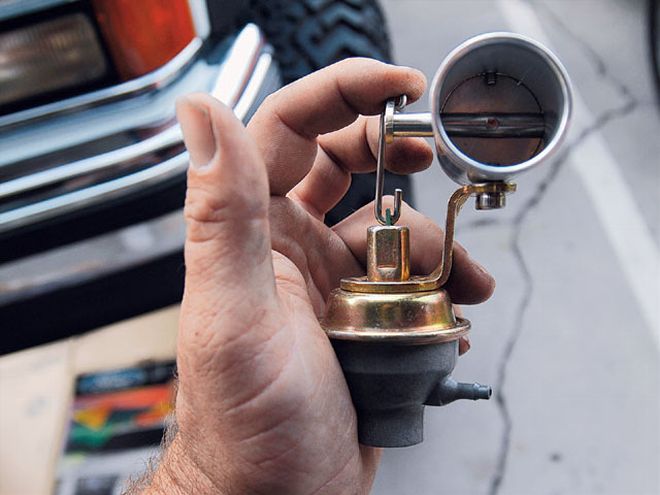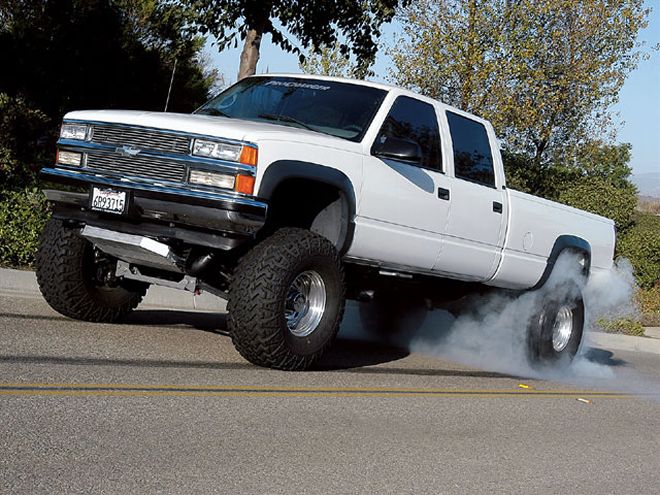
| 2000 Chevy Truck Supercharger Installation 2000 Chevy Truck
Not everyone has $40,000 dollars to spend on a tow rig. When we found this '00 Chevy truck for less than $19,000, we realized that a cool tow rig was well within our budget. It already had a Pro Comp lift kit, Performance Accessory body lift, and a set of Mickey Thompson 39-inch Baja belted meats. We picked up the truck and took it home. It was shortly after we hooked it up to our 10,000-pound trailer that we figured out that the big motor had what was less than desirable power. It was pulling the load, but the Anza-Borrego Pass just east of San Diego, California, on I-8 is a fairly steep incline. This trip was defiantly testing the strength of our big-block Chevy. We mashed the hammer down and found that the big truck was faring well against newer trucks with similar loads, but all the diesel rigs and new 8.1L Chevys were blowing by us with less strain on the motor.
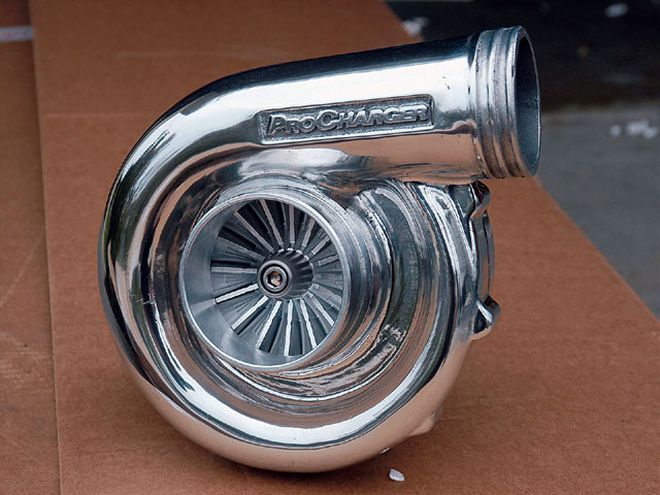
| ProCharger builds high-quality self-contained superchargers. The great thing about that is that they are easy to install, and if your motor has contaminated oil, it doesn't destroy the supercharger.
Stock Dyno PullWe decided it was time to see what was going on with the 454ci engine. A trip over to Westech Performance soon gave us the answers we were looking for. In an effort to keep the Gen. V big-block from destroying the associated driveline components, GM implements programming that excessively manages torque. It also runs the engine lean on fuel to help keep emissions down. The problem is that you're not saving any resources if you're throwing away an engine because the lean condition killed it. We ran the engine in its stock form and found that the air/fuel ratio was really bad. A good average in air/fuel ratio through the powerband is about 11.2:1. Our average air/fuel was 13.6:1 and got as lean as 15.6.1. With the lack of fuel, the engine could barely muster 233 hp and 313 lb-ft of torque.
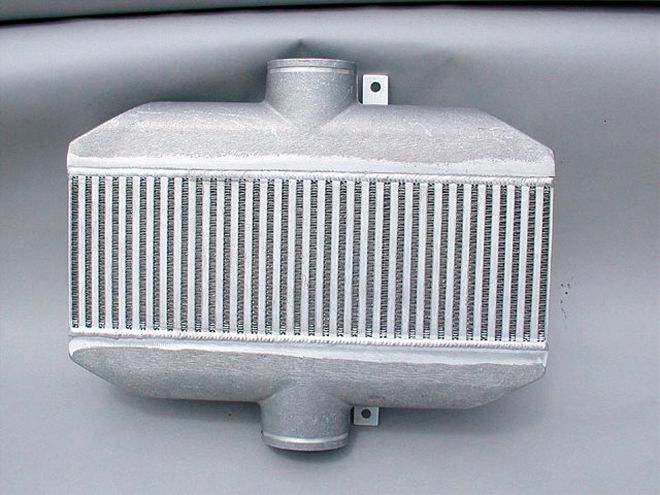
| An air-over-air intercooler is used in all the ProCharger systems. This helps keep the heat down so the cooler intake charge can be tuned for greater power.
After SuperchargerProCharger sells an OE-legal blower for the 454 that uses a Fuel Management Unit (FMU) to increase fuel delivery for the added air the blower supplies. We adapted the system to our lifted truck in hopes of finding some much-needed power. After custom-fitting the intercooler to our lifted rig, we ran some tests and found some answers. ProCharger's instructions explain that tuning may be necessary for certain-model trucks and certain conditions. This was definitely the case with our OBD-II Chevy truck. The problem with the fuel was a 60-second delay on the fuel enrichment programming that is used to manage torque in an effort to extend the life of the driveline components. This programming, coupled with additional systems that keep the truck from shifting hard and manage converter slippage, prevent the truck from putting down the power to the wheels. After installation, the ProCharged engine made 324 hp and 413 lb-ft of torque to the 39-inch-tall mud-terrain tires. The increase of 90 hp and 100 lb-ft in torque is pretty awesome, considering the gears have a 4.10:1 stock ratio. But the air/fuel ratio was still not where it should have been, and was now averaging 13.8:1. There was more left on the table for the blower - the question was, How much?
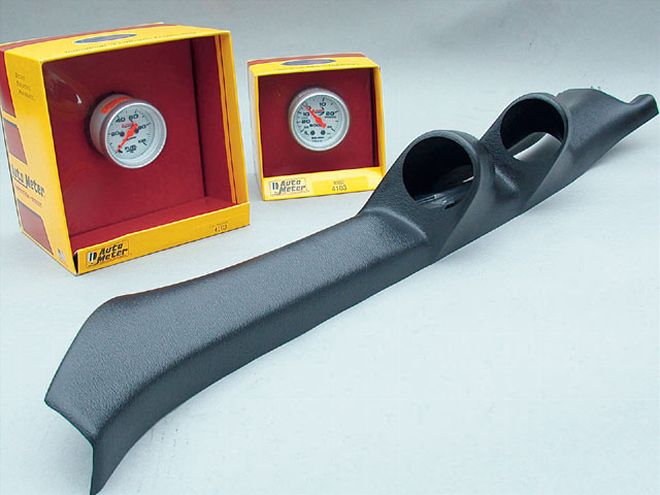
| It's suggested that you give yourself some input from the manifold and fuel pressure to ensure the system is working properly. Auto Meter has gauges and A-pillar pods to remote any of its gauges to an easy viewable location on the A-pillar.
After ProgrammingWe had Fastchip send us a computer with the company's own reflashed custom program designed for induction. We simply plugged in the ECM and fired it up. We had the option of having two computers so we could test the truck in the exact same conditions, on the same day. A rip on the dyno would tell how much more the blower was going to be allowed to feed the engine. After the run, the data was in: Our air/fuel average went down to 11.4, and the leanest reading was 12.9. That gave us the fuel we needed to feed the big blower motor. At 333 hp and 459 lb-ft of torque, the engine really woke up: only 8 more horsepower, but 46 more lb-ft of torque. That left us with a total gain of 100 hp and 146 lb-ft of torque. There was still more on the table to be had due to the fact that the ProCharger unit uses an intercooler with a scoop that keeps positive pressure on the front side of the unit. Our problem was in our body lift, which prevented us from using the ProCharger air scoop. We will be making a skidplate for our 4x4 project that will have a scoop fabricated in it, so we can use the maximum efficiency the intercooler has to offer. But the truck tows the trailer with much less effort, the driveability is better, and the truck will actually peel the hides off the 39-inch-tall mudders.
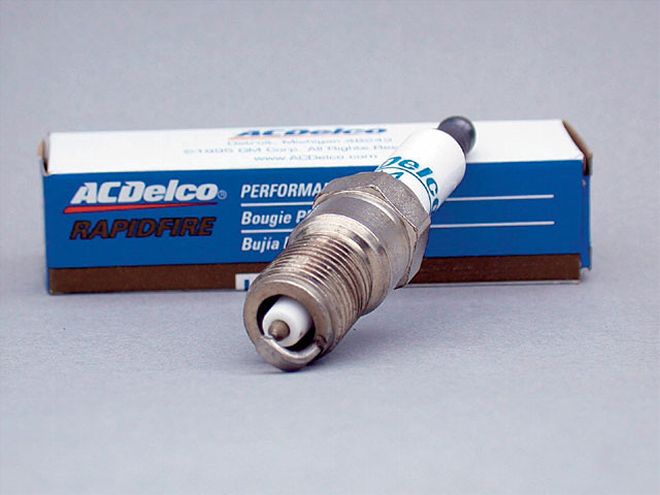
| It's also suggested you give your truck a tune-up before you install the ProCharger. We used ACDelco parts to keep things stock. A cap, rotor, fuel filter, and good plug are the basic necessities to get the engine running smoothly before you lay the pressure to it. The rapid-fire plug is a good plug to enhance your spark.
When you're pushing that much extra power out of the stock engine, it's a good idea to keep an eye on the engine's system. We installed Auto Meter's two-gauge pillar pod, vacuum/boost gauge, and fuel pressure gauge to keep a watchful eye over the vitals. It would be a good idea to install an air/fuel ratio meter, but most of them use narrow-band O2 sensors that are cheap to install, but are not very accurate in real time. You just need to make sure the surge valve and FMU keep the boost level and fuel to the proper pressures. Bolting on the ProCharger also increased our gas mileage. The exact number is not certain because the speedometer is not calibrated to the tire diameter, but we can say for certain where previously we would have had to fill up before 266 miles, we can now hit that mark, with a little room to spare. This is pretty good, considering we only made it about 250 miles before the fuel light came on. Here's how our install went.
ConclusionForce induction works. The gains here are fairly typical of a centrifugal supercharger. In some cases, more power can be had from the simple fact that we were unable to use the intercooler at its full potential. But this can only be done with the help of some tuning. So if you plan on getting a supercharger, we suggest you call the folks at ProCharger and tell them what your scenario is so your ECM's fuel and timing curve can be mapped out for optimum performance.
 | 2000 Chevy Truck Supercharger Installation 2000 Chevy Truck
Not everyone has $40,000 dollars to spend on a tow rig. When we found this '00 Chevy truck for less than $19,000, we realized that a cool tow rig was well within our budget. It already had a Pro Comp lift kit, Performance Accessory body lift, and a set of Mickey Thompson 39-inch Baja belted meats. We picked up the truck and took it home. It was shortly after we hooked it up to our 10,000-pound trailer that we figured out that the big motor had what was less than desirable power. It was pulling the load, but the Anza-Borrego Pass just east of San Diego, California, on I-8 is a fairly steep incline. This trip was defiantly testing the strength of our big-block Chevy. We mashed the hammer down and found that the big truck was faring well against newer trucks with similar loads, but all the diesel rigs and new 8.1L Chevys were blowing by us with less strain on the motor.
| 2000 Chevy Truck Supercharger Installation 2000 Chevy Truck
Not everyone has $40,000 dollars to spend on a tow rig. When we found this '00 Chevy truck for less than $19,000, we realized that a cool tow rig was well within our budget. It already had a Pro Comp lift kit, Performance Accessory body lift, and a set of Mickey Thompson 39-inch Baja belted meats. We picked up the truck and took it home. It was shortly after we hooked it up to our 10,000-pound trailer that we figured out that the big motor had what was less than desirable power. It was pulling the load, but the Anza-Borrego Pass just east of San Diego, California, on I-8 is a fairly steep incline. This trip was defiantly testing the strength of our big-block Chevy. We mashed the hammer down and found that the big truck was faring well against newer trucks with similar loads, but all the diesel rigs and new 8.1L Chevys were blowing by us with less strain on the motor.
 | ProCharger builds high-quality self-contained superchargers. The great thing about that is that they are easy to install, and if your motor has contaminated oil, it doesn't destroy the supercharger.
Stock Dyno Pull
| ProCharger builds high-quality self-contained superchargers. The great thing about that is that they are easy to install, and if your motor has contaminated oil, it doesn't destroy the supercharger.
Stock Dyno Pull | An air-over-air intercooler is used in all the ProCharger systems. This helps keep the heat down so the cooler intake charge can be tuned for greater power.
After Supercharger
| An air-over-air intercooler is used in all the ProCharger systems. This helps keep the heat down so the cooler intake charge can be tuned for greater power.
After Supercharger | It's suggested that you give yourself some input from the manifold and fuel pressure to ensure the system is working properly. Auto Meter has gauges and A-pillar pods to remote any of its gauges to an easy viewable location on the A-pillar.
After Programming
| It's suggested that you give yourself some input from the manifold and fuel pressure to ensure the system is working properly. Auto Meter has gauges and A-pillar pods to remote any of its gauges to an easy viewable location on the A-pillar.
After Programming | It's also suggested you give your truck a tune-up before you install the ProCharger. We used ACDelco parts to keep things stock. A cap, rotor, fuel filter, and good plug are the basic necessities to get the engine running smoothly before you lay the pressure to it. The rapid-fire plug is a good plug to enhance your spark.
When you're pushing that much extra power out of the stock engine, it's a good idea to keep an eye on the engine's system. We installed Auto Meter's two-gauge pillar pod, vacuum/boost gauge, and fuel pressure gauge to keep a watchful eye over the vitals. It would be a good idea to install an air/fuel ratio meter, but most of them use narrow-band O2 sensors that are cheap to install, but are not very accurate in real time. You just need to make sure the surge valve and FMU keep the boost level and fuel to the proper pressures. Bolting on the ProCharger also increased our gas mileage. The exact number is not certain because the speedometer is not calibrated to the tire diameter, but we can say for certain where previously we would have had to fill up before 266 miles, we can now hit that mark, with a little room to spare. This is pretty good, considering we only made it about 250 miles before the fuel light came on. Here's how our install went.
| It's also suggested you give your truck a tune-up before you install the ProCharger. We used ACDelco parts to keep things stock. A cap, rotor, fuel filter, and good plug are the basic necessities to get the engine running smoothly before you lay the pressure to it. The rapid-fire plug is a good plug to enhance your spark.
When you're pushing that much extra power out of the stock engine, it's a good idea to keep an eye on the engine's system. We installed Auto Meter's two-gauge pillar pod, vacuum/boost gauge, and fuel pressure gauge to keep a watchful eye over the vitals. It would be a good idea to install an air/fuel ratio meter, but most of them use narrow-band O2 sensors that are cheap to install, but are not very accurate in real time. You just need to make sure the surge valve and FMU keep the boost level and fuel to the proper pressures. Bolting on the ProCharger also increased our gas mileage. The exact number is not certain because the speedometer is not calibrated to the tire diameter, but we can say for certain where previously we would have had to fill up before 266 miles, we can now hit that mark, with a little room to spare. This is pretty good, considering we only made it about 250 miles before the fuel light came on. Here's how our install went.
